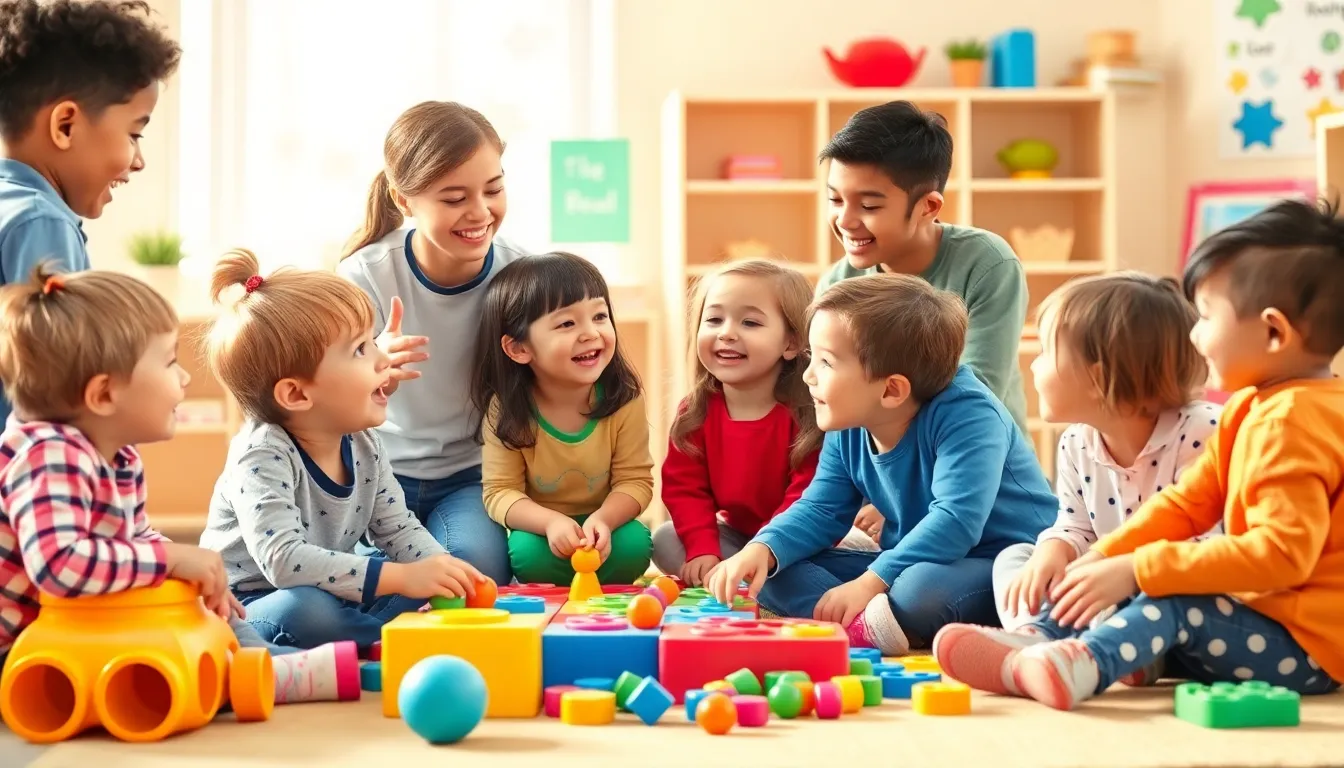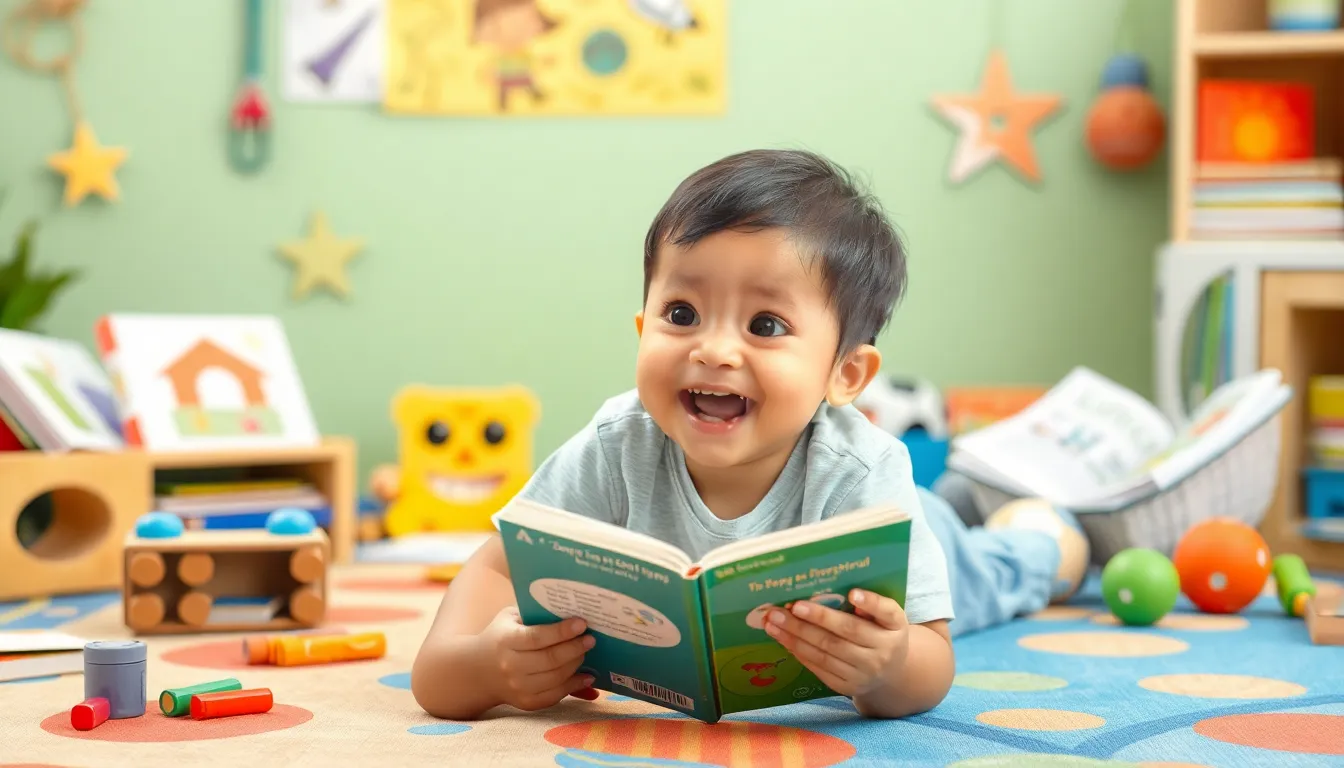Table of Contents
ToggleIn a world where serious conversations often drown out the laughter, finding the right balance between language and play is essential. Imagine a toddler learning to speak while simultaneously mastering the art of making silly faces. It’s a delightful dance of words and whimsy that fuels creativity and connection.
Language isn’t just about grammar and vocabulary; it’s about expression and joy. When play enters the mix, it transforms mundane learning into an adventure filled with giggles and discoveries. By blending structured language with playful interactions, individuals can unlock a treasure trove of communication skills that stick like peanut butter on toast. So why not embrace the fun? After all, who said learning can’t be a riot?
Understanding Language and Play Balance
Balancing language learning with playful interactions fosters creativity and connection, enhancing communication skills. This approach redefines language education by integrating enjoyment and expression.
Importance of Language Development
Language development serves as a critical component of communication. It significantly impacts social skills, cognitive growth, and emotional intelligence. Children who engage in rich language experiences often demonstrate improved vocabulary and grammar understanding. Increased interactions through conversation help reinforce comprehension. Additionally, storytelling and discussions provide valuable opportunities for practicing language skills. Prioritizing language-rich environments facilitates effective communication and supports literacy development.
Significance of Play in Learning
Play serves as a powerful vehicle for learning. Engaging in playful activities encourages exploration and experimentation with language. Through games, role-playing, and creative dramatics, individuals can practice new vocabulary in context. This natural method reduces the pressure typically associated with formal learning. Furthermore, play promotes motivation and retention, making the learning experience memorable. Environments that emphasize playful learning nurture curiosity and support language acquisition. It’s essential to incorporate various playful elements to create a comprehensive learning experience.
The Connection Between Language and Play

Combining language and play fosters an enriching learning environment. Numerous studies show that playful interactions significantly boost language acquisition and retention.
How Play Enhances Language Skills
Play cultivates language skills by creating a relaxed atmosphere for expression. Engaging in games allows for spontaneous language usage, encouraging learners to experiment with words and phrases. Role-playing scenarios enable individuals to practice conversational skills in context. Dramatic play offers opportunities for rich vocabulary exploration, nurturing creativity and comprehension. Furthermore, play reduces anxiety associated with formal learning, promoting a positive attitude toward language development.
Language Use During Playtime
Children often use language in diverse ways during playtime. Collaborative games encourage dialogue, as players communicate strategies and negotiate roles. Articulate voices emerge in storytelling, where children weave narratives that showcase their vocabulary. Facilitation of peer conversations enhances social skills, reinforcing turn-taking and active listening. As they interact, learners develop a deeper understanding of language nuances and context, enriching their overall communication abilities. The playful environment becomes a vital context for natural language practice.
Strategies for Achieving Language and Play Balance
Balancing language learning with play activity fosters creativity and enhances communication skills. Incorporating playful elements into learning environments encourages exploration and growth.
Creating Language-Rich Play Environments
Setting up language-rich play environments engages children in immersive experiences. Use age-appropriate books, interactive toys, and visual aids. Providing diverse materials promotes vocabulary development and language comprehension. Encourage storytelling during playtime, as this allows children to express thoughts and emotions. Active participation in group activities solidifies social skills and nurtures language development. Overall, a vibrant, stimulating space draws children into playful learning.
Encouraging Interactive Play
Promoting interactive play boosts language acquisition and retention. Include games that require cooperation, such as tag or board games. During these activities, children converse, negotiate, and collaborate. Role-playing scenarios enable learners to practice language in social contexts. Use questions to encourage dialogue, which deepens understanding and boosts confidence. Frequent interactions make language learning naturally enjoyable and effective.
Challenges in Maintaining Language and Play Balance
Maintaining a balance between language learning and play presents several challenges. These issues can hinder effective communication development.
Overemphasis on Academics
Focusing solely on academics overshadows the benefits of playful learning. Language skills often depend on engaging experiences that academic settings might not provide. Structured environments may neglect the importance of exploration and creativity, leading to stress and disengagement. Children thrive when laughter and interaction are part of their learning process. Learning environments that prioritize play promote curiosity and vocabulary growth, yet many curricula overlook this approach. Consequently, overemphasis on academic achievement risks stifling a child’s natural language development.
Screen Time and Its Impact
Increased screen time creates another challenge in balancing language and play. Digital devices often replace active, collaborative play with passive consumption of content. Excessive use can limit opportunities for face-to-face interactions essential for language acquisition. Communication skills develop through engaging conversations, storytelling, and playful interactions. Furthermore, screen time may reduce attention spans, making it difficult for children to fully engage in imaginative play. Alternatives to screens, like hands-on activities and social games, encourage richer language experiences. Prioritizing play over screens helps ensure comprehensive language development.
Balancing language learning with play is essential for effective communication development. By integrating playful activities into language instruction, learners can experience joy while enhancing their skills. This approach not only fosters creativity but also reduces anxiety associated with formal learning.
Emphasizing interactive play nurtures social skills and encourages a deeper understanding of language nuances. As learners engage in storytelling and collaborative games, they build confidence and motivation. Prioritizing play in educational settings creates enriching environments that support curiosity and vocabulary growth. By embracing this balance, individuals can unlock their full potential in language acquisition, making the learning journey both enjoyable and impactful.




